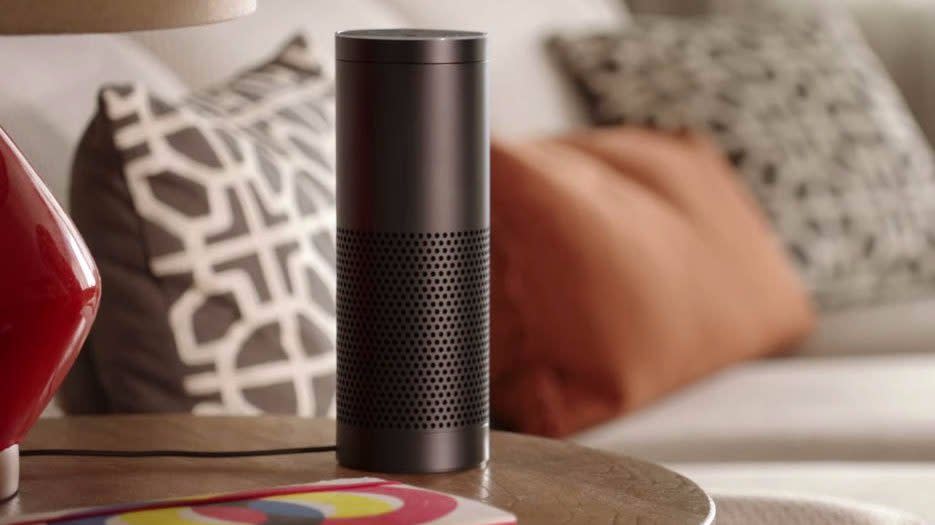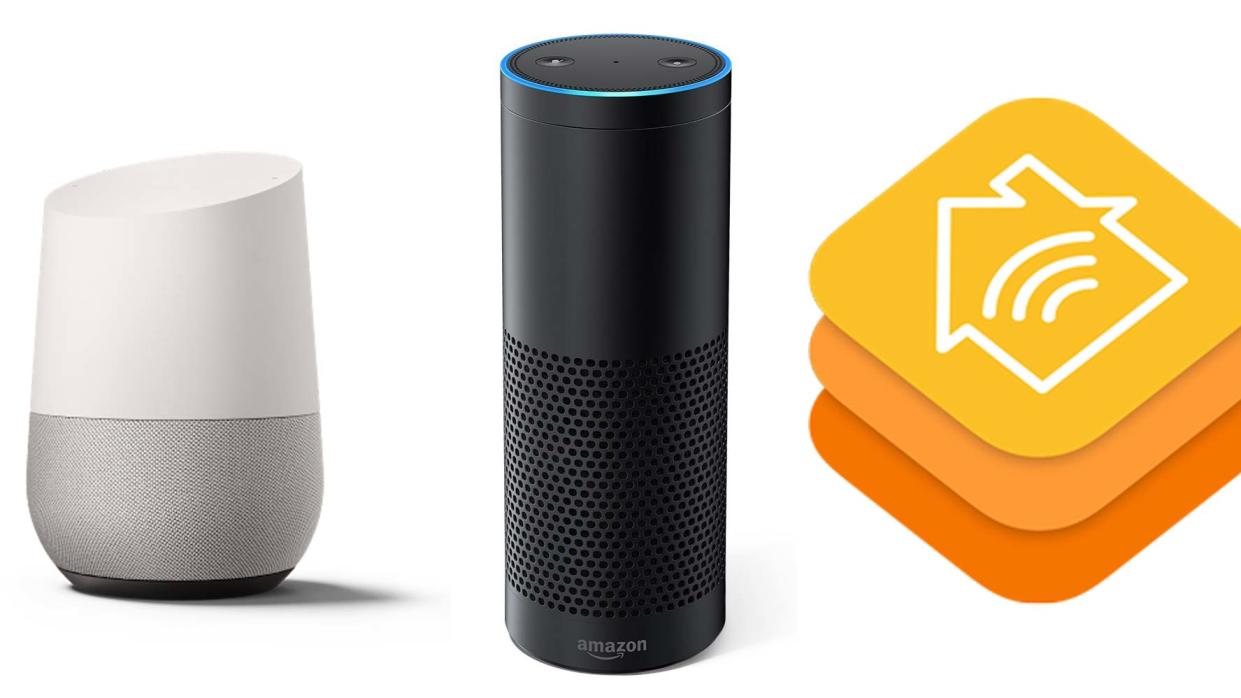Google Home, Amazon Echo, or Apple HomeKit? How to Pick
Google; Amazon; Apple
Smart homes are no longer some sci-fi fantasy—they have truly arrived, thanks to home tech hubs such as Amazon Echo, Apple HomeKit, and Google Home (the newest on the block released on Friday). These devices allow homeowners to access all of their smart home integrated technology—from locks to thermostats to music and far more—through voice commands. Long gone are the days of having to type a question or command into a search bar or manually manipulate a control panel.
Only with three strong options on the market, many homeowners might be wondering: Which smart home hub is right for me? Granted, they may all do similar things and be compatible with the same third-party products (including Nest thermostats, Philips Hue lights, and SmartThings home security), but there are some significant differences among these devices.
Here’s a rundown of your three main options, along with the pros, cons, and “buy-it-if” bottom lines on each.
Google Home

With the simple phrase “OK Google,” Google Home ($129.99) is ready to play music from your app of choice (Google Play, Spotify, Pandora), manage your grocery list, set alarms, translate phrases, turn on your lights, and essentially “Google stuff” with your voice and accomplish anything you could typing on your laptop or Android phone.
Pros: While the voice-tech capabilities between Google Home and Amazon Echo are similar, experts generally agree that Google Home’s assistant has a better grasp of language so you wind up with fewer conversational dead ends.
John Brandon from VentureBeat offers this example: “When I tell Alexa to turn off the lights at night, that’s helpful. When I ask her to tell me the population of Austria, that’s a neat trick. However, when I ask her to name the smallest country by population, she balks. The Google Assistant knows the answer (the Vatican), because it’s smarter—it has parsed my query for other users a million times since 1997.”
Cons: Google Home does pale in comparison to the Echo in the number of “skills”: Echo boasts over 300, from telling jokes to thumbs-downing songs, while Google Home has only around 80. But that’s likely to change as Google starts to roll out newer versions.
Buy it if: You want the smartest smart home hub where it feels like you’re talking to an actual person. It’s also $50 cheaper than the Echo and “a little more friendly looking than Echo thanks to the interchangeable bases” with different colors and coverings (metal or fabric), says Mark Bradford, a technology consultant in Milwaukee.
Amazon Echo

Amazon
Amazon Echo ($179.99) was the first smart home hub to hit the market in 2014, and as such has had a massive head start, selling an estimated 3 million units in the U.S. As long as the sleek cylindrical speaker is within earshot, you can say “Alexa” (Amazon’s version of an intelligent assistant), then ask it to play music, lock your doors, and more. Thanks, Alexa!
Pros: The Echo is by far the leader of the pack when it comes to the number of definable “skills” with 300 and counting—from reading your Fitbit stats to calling Uber. And if you’re a Prime member, the Echo can order products. Just say, “Alexa, buy me a toothbrush,” and it’ll place the order. It’s almost too easy to order stuff.
Cons: As mentioned above, Echo may not understand everything you’re asking. Consumer Reports’ Mike Gikas notes that you can ask Google Home, “When’s the next time it’s going to rain?” And it will tell you, “In [your home town] it will rain on Thursday.” But ask Alexa the same question, and you’ll just get the current forecast, whether it’s for rain or shine.
Buy it if: You want a tried-and-tested product. If you’re put off by the nearly $200 price tag, try the Amazon Dot ($49.99), which has the same capabilities only with a smaller and less sensitive speaker.
Apple HomeKit

Apple
The main thing to understand about the Apple HomeKit is that it’s not a physical hub you buy, but Apple’s framework for communicating with and controlling connected accessories in a user’s home. You can access it with the free Home app that comes standard with iOS 10 on all Apple devices—from the iPhone to the iPad to the Apple TV. Just tap Siri, and the iOS built-in “intelligent assistant” will make your wish its command.
Pros: “Mac-heads and Apple fanboys will gravitate toward this technology,” Bradford says. So if you can’t go a day without your iPhone, MacBook Air, or Apple Watch, this might be the smart home solution for you.
Cons: Although the HomeKit brings the convenience of having control at your fingertips, that’s kind of a problem. Bradford confesses that he just doesn’t see a lot of people adopting the HomeKit for the simple fact that on older versions of this app, you have to push a button to activate Siri to make a voice command.
“At their core, people are looking for the quickest way to do things, and having to push a button adds an extra step,” he says. “They’d rather be able to just yell into their living room to get their device to work.”
Granted, the latest iteration of Siri can be activated by voice alone with a “Hey, Siri.” Yet some phones must be plugged in, or at least pulled out of your pocket. So, hands-free, this is not.
Buy it if: You’re a die-hard Apple fan—and never plan to change.
The post Google Home, Amazon Echo, or Apple HomeKit? How to Pick appeared first on Real Estate News and Advice - realtor.com.



